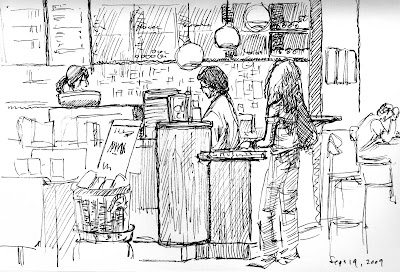Last month I embarked on some modest advertising of my web comic, inspired by the adage “you have to spend money to make money.”
What have I learned? Aim big – it’s better to spend $25 in one paid slot that reaches a quarter million eyeballs (well literally half a million eyeballs) than to try to nickel and dime your way via lower impressions on smaller sites. Common sense? Perhaps in hindsight.
The resulting chatter from the costliest-ad yet is returning heavy traffic weeks after the original ad aired. Want to know the irony? The chatter was a thread in a forum discussing “Awful Web Comics”. Without emoticon and eyes-rolling, when a member of that community was calling my strip the “best web comic ever” I signed up to thank them!
This by no means discouraged or offended me, because
- I knew the thread was called “Awful Web Comics”
- You develop a thick skin doing graphic design professionally as long as I have
- This community is not my intended audience. If you are into furry animals in your mid-twenties, then you’re probably not interested in my content (but Mom and Dad may “get it”) and finally
- any publicity is good publicity.
All this analysis speaks to my impatience; I will be dutifully creating the best comic I am able. Paid advertising was a means to insure that readership, which was critical to my first full month. My goal for November 2009: no paid advertising whatsoever until the end of month. I’ll do my part on Black Friday (staying away from the stores) and spend my entire monthly budget in one shot.
The comic I’m considering advertising on is called “Questionable Content”.


